Form Follows Story
Pim Schachtschabel, Design Director at Tellart, starts off by saying, “At Tellart, we approach experience design with a ‘story-first’ mindset. Every material choice, technological integration and spatial interaction is rooted in narrative depth. Unlike traditional exhibit design, where technology often feels like an add-on, we treat it as a fundamental material — something that must be shaped and crafted like wood or metal. This allows us to create deeply immersive experiences that engage visitors on multiple sensory levels.”
He continues, “For the World Expo 2025 in Osaka, we’re shaping the holistic guest experience for both the Netherlands Pavilion and the Philippine Pavilion. Each experience is meticulously designed to resonate emotionally as well as intellectually, ensuring that visitors don’t just see an exhibition but feel a story unfolding around them. Our work is about transformation — shifting perspectives and inspiring action — by making complex global challenges, such as climate change, both tangible and personal.”
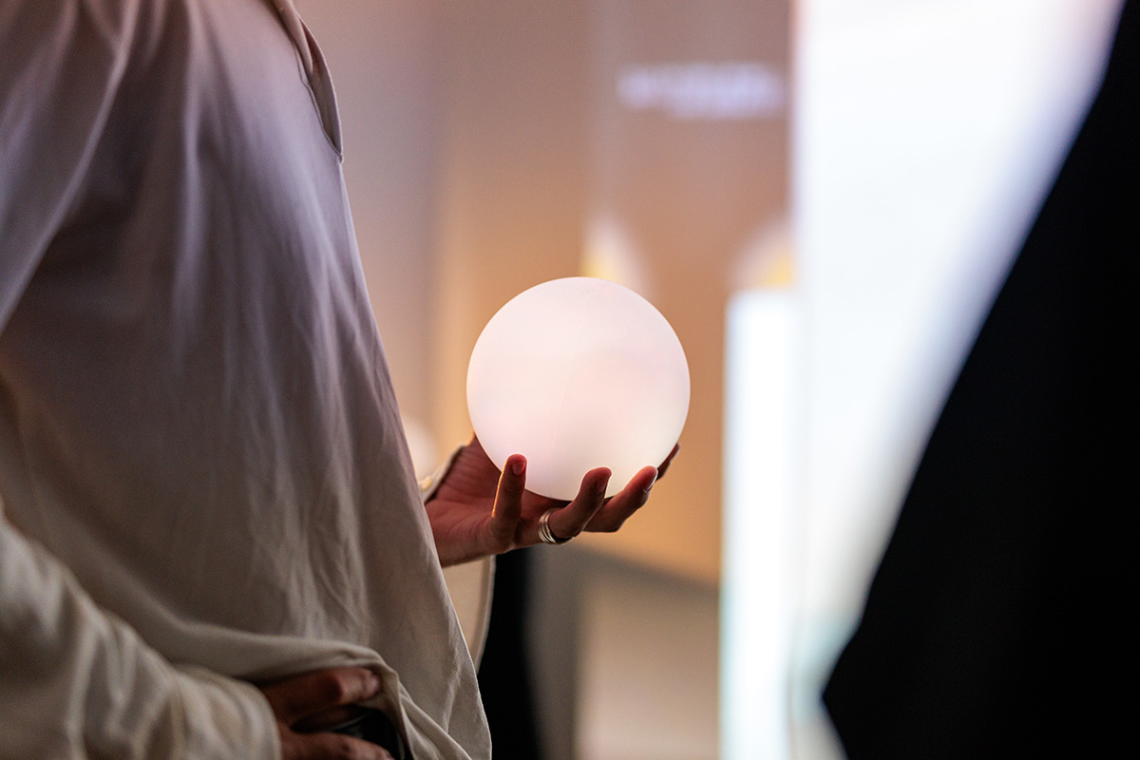
Prototype of the orb for the Netherlands Pavilion | Photography: Lieke Vermeulen
Sabrina Verhage, Technology Director at Tellart, adds, “We like to say we work with the principle of ‘form follows story’. The design of a structure or an object should be about what story it aims to convey.” She elaborates further, “With all the work we do, we put a lot of energy and effort into crafting that story and clarifying its core message, and considering what elements need to be emphasized, for instance, through spatial design, sound effects, or visuals. Every design decision we make is rooted in the story we’re trying to tell.”
“Every design decision we make is rooted in the story we’re trying to tell.”
–
Sabrina Verhage, Technology Director at Tellart
Sabrina explains how this idea shapes the Netherlands Pavilion’s design: “For this pavilion, we collaborated with RAU architects to ensure that both the building and the visitor experience form one integral whole. This means that elements like the building’s shape, including the sphere and its facade, are integral to the story we’re telling. The visitor experience inside then continues that narrative in the same way, with everything the visitors do and see rooted in that one story. We take this principle quite far — the goal is for guests to fully experience the story we’re conveying through everything they see, do, touch and hear, all of it!”
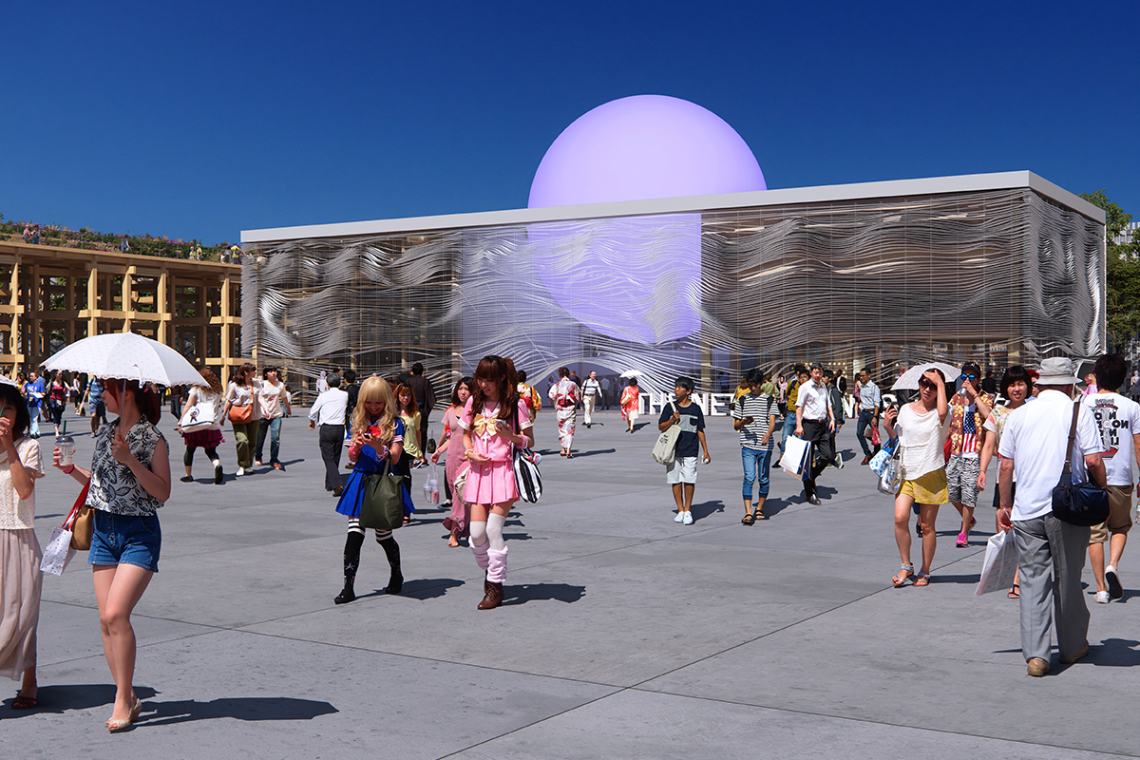
Render of the Netherlands Pavilion | Design: RAU | Visual: Plomp
The Netherlands Pavilion
For the Netherlands Pavilion, the objective is to embody the Dutch concept of ‘common ground’ — a centuries-old mindset of collaboration and innovation in response to living below sea level. Pim explains, “Through interactive storytelling tools like the orb, visitors are actively engaged in understanding how the Netherlands is redefining its relationship with water to create sustainable energy solutions. The pavilion isn't just an exhibition; it’s an invitation for collective action in rethinking humanity’s connection with the planet.” Sabrina adds, “If you look closely, the facade evokes rippling water; these two elements hint at the visitor experience that guests will go through inside. Guests will actually receive a glowing orb to take through the visitor experience.”

Prototype of the Netherlands Pavilion Pledge Station | Photography: Tellart
The design choices, Sabrina continues, are closely tied to this message of collaboration: “A key message the Netherlands Pavilion aims to convey is the idea of coming together and collaborating. Within guest experience, we’re encouraging visitors to explore the functionality of the orb by coming together, using fun and interactive technologies to convey the story.”
The Philippine Pavilion
For the Philippine Pavilion, the goal is to immerse visitors in a vibrant, sensory-driven exploration of the country’s rich cultural and ecological diversity. Pim describes the experience as follows, “It begins with a striking visual of a weaving loom in motion — an artistic metaphor for how the country’s diverse landscapes, people, and traditions are intricately interwoven. As guests move through a dynamic forest of handcrafted scrims made from natural and upcycled materials, they become part of the story. Interactive installations, like the digital vortex of sardines or the confetti-like fiesta leaves, ensure that visitors don’t just observe but actively shape their journey.” Chochay Garcia, Creative Producer for Woven, adds, “In an Expo that promises to focus heavily on technology solutions, our pavilion centres on the fundamental human need for connection with nature, and with each other.”
Sabrina elaborates, “In the Philippine Pavilion, we’re telling the story of the country’s rich culture and biodiversity, seen through the lens of craftsmanship. On the facade, we’re showing an animation of Filipino weaving, and as you walk into the guest experience, it’s as if you’re stepping into the animation, into the weaving loom. It might even feel like you’re standing inside the loom itself. You’ll have to come to the pavilion to experience that yourself.”
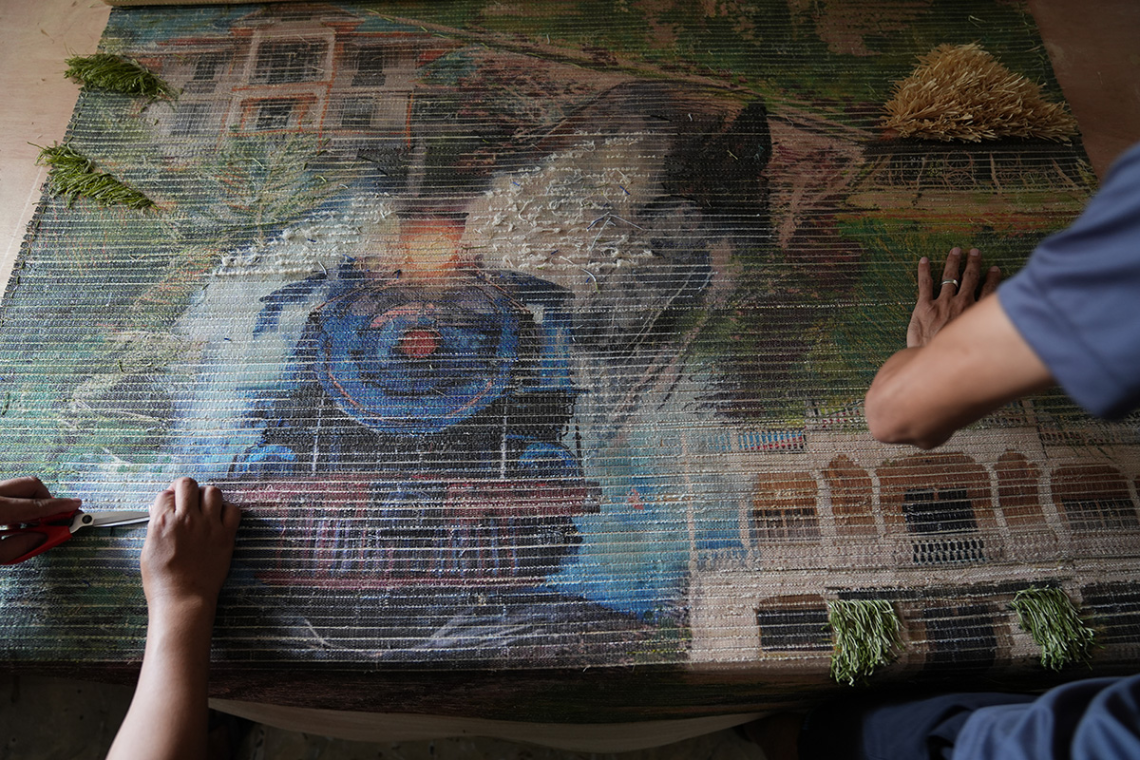
Tapestry for the Journey through the Philippines | Photography: Luca Zander and Tellart
Hands-on Prototyping
Sabrina notes, “For the technology we use in our experiences, we make a lot of prototypes — smaller or simpler test versions of the idea — so that we can verify that they convey the story in the way that we intend.” She continues, “For the Netherlands Pavilion, we got to test elements of the visitor experience in our studio in Amsterdam. We built some of the components at 1:1 scale, like the glowing orb that is part of the guest experience. We’ve also hosted people for user tests, to ask them if they understand the story we’re trying to convey. They got to see and hold the first versions of the orb, see how the orb’s lights might change for instance.” She elaborates, “For the Philippine Pavilion, we’re presenting a large interactive wall element. We set it up in full scale in Amsterdam too, to make sure we can get this large-scale to work — but also to experience it ourselves, give feedback, and optimize the visitor experience and the story through it. Not only is it really fun to work on these prototypes, but they are also very important in the design process.”
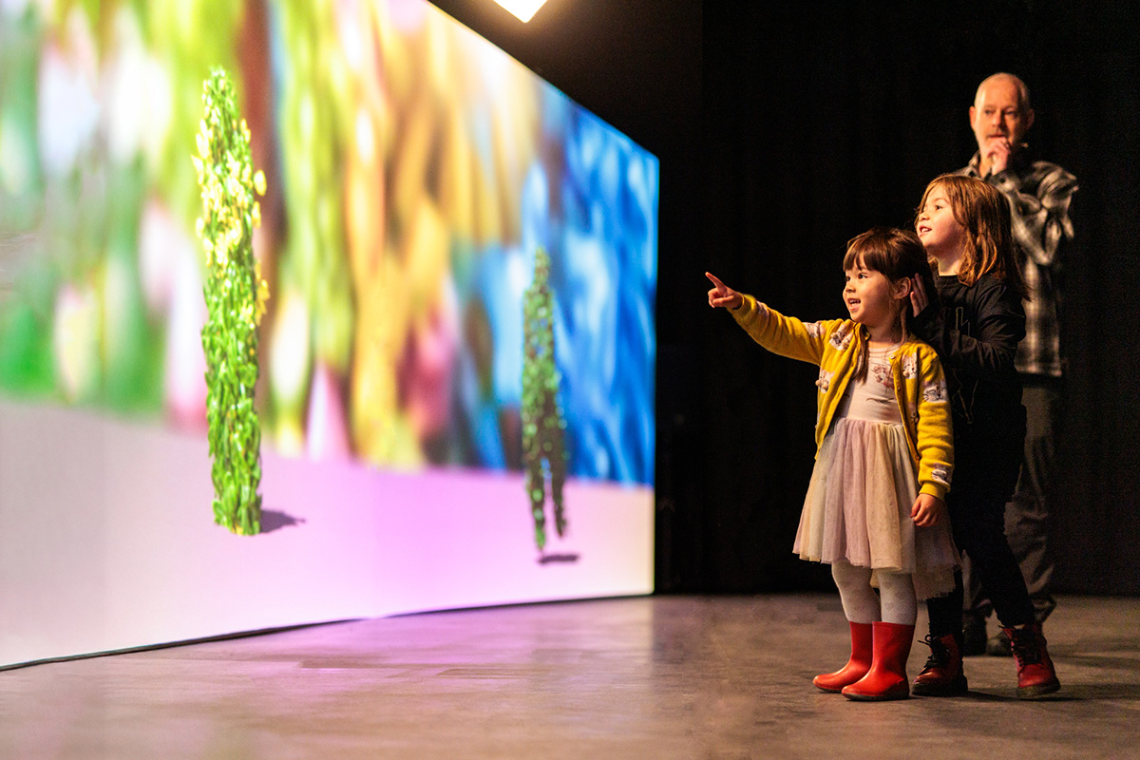
Prototype of Dancing with Nature for the Philippine Pavilion | Photography: Lieke Vermeulen
Pim adds, “Our design process is rooted in curiosity and discovery. We employ an iterative, hands-on approach where we prototype, test and refine in collaboration with specialists across disciplines. Since our experiences are multi-sensory and interactive, we focus on ‘design through making’ — building physical and digital models to test spatial flow, material choices, and interactive storytelling elements.”
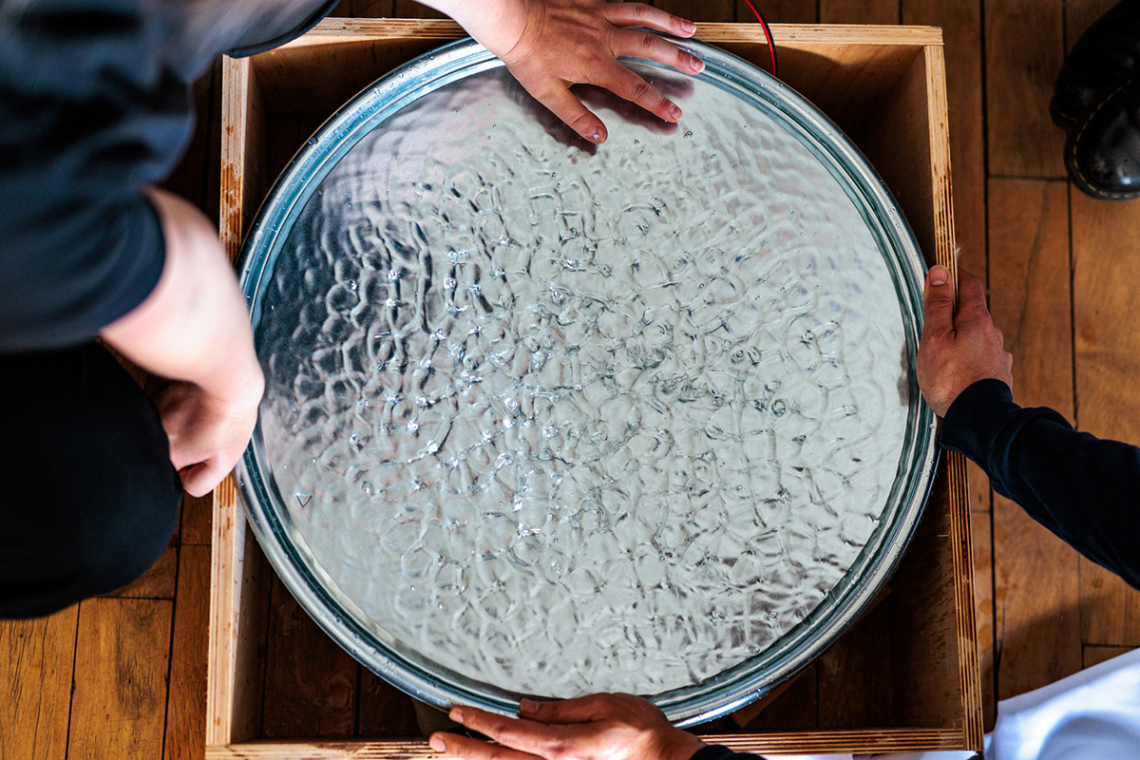
Prototype for the Water Basin for the Netherlands Pavilion | Photography: Lieke Vermeulen
Pim continues, “Collaboration is central to our work. For Expo 2025, we are working closely with architects, cultural experts and sustainability leaders to ensure that both pavilions reflect not just compelling stories, but also tangible innovations. Our funding choices are informed by our commitment to sustainability, ensuring that investments are directed toward locally sourced materials, responsible manufacturing and technologies that enhance, rather than overshadow, the visitor experience.”
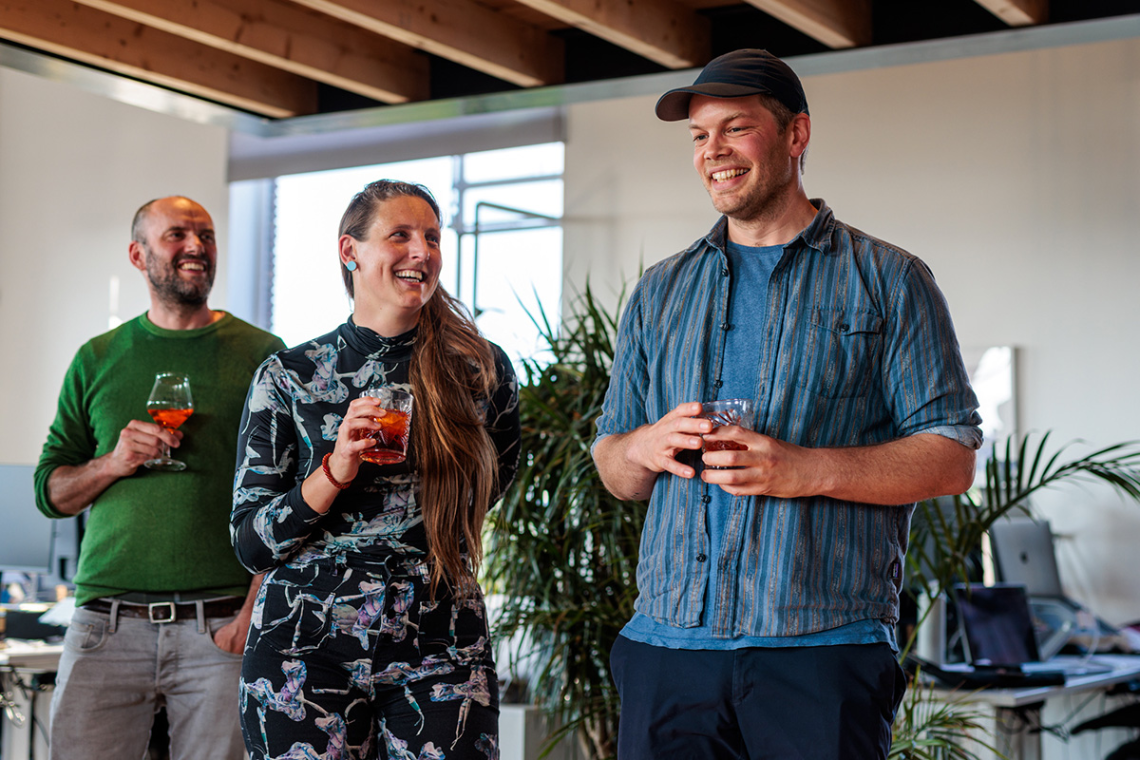
Photo: Ries Straver, Sabrina Verhage and Pim Schachtschabel (from left to right) | Photography: Lieke Vermeulen
Overcoming Challenges
Pim explains, “One of the biggest challenges in designing immersive experiences — especially for projects as complex as the Expo pavilions — is translating emotions and sensory details across digital communication. Much of our design process involves collaborating with global teams remotely, making it essential to align everyone’s imagination and vision. How can you convey the rough texture and earthy scent of woven Abaca fibers or the mesmerizing motion of a swirling school of sardines through a screen? To bridge this gap, we rely on extensive prototyping, video simulations and in-depth storytelling sessions to ensure that all stakeholders are picturing the same experience.”
“Ultimately, the most exciting breakthroughs come from seeing all sensory elements come together as a cohesive, emotionally resonant experience.”
–
Pim Schachtschabel, Design Director at Tellart
“Another challenge is designing spaces that remain adaptable. Pavilions at World Expos are temporary structures, so we focus on creating experiences that are impactful yet modular — allowing for reuse, repurposing and sustainability even after the event concludes. Ultimately, the most exciting breakthroughs come from seeing all sensory elements — light, texture, movement, sound — come together as a cohesive, emotionally resonant experience. It’s in those moments that we know we’ve crafted something truly transformative, something that doesn’t just inform but inspires.”
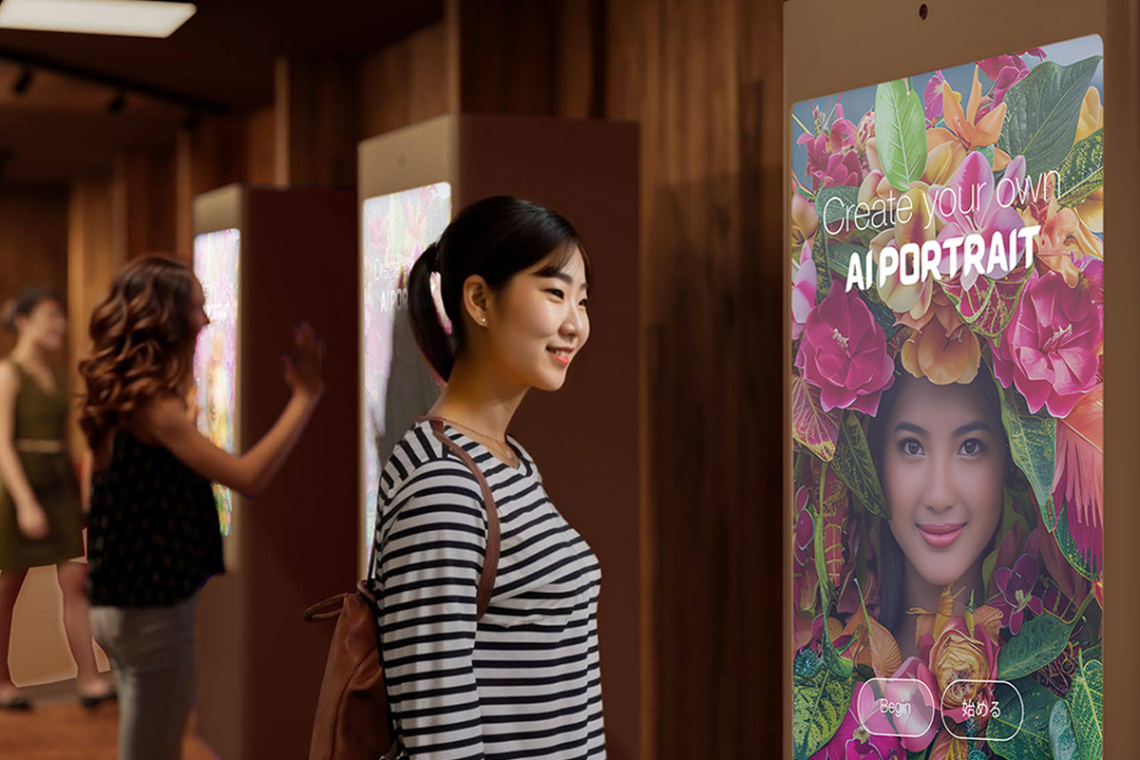
Render of the prototype of the AI Photobooth for the Philippine Pavilion | Visual: Tellart
Sabrina shares, “For one of the experiences in the Philippine Pavilion, we’re using AI. It’s been super fun learning to use AI as a new material in our design process. We get to experiment with open-source models and mold and shape how they work. This technology is in an exciting state at the moment, offering many new ways to implement AI in interactive experiences. For the Netherlands Pavilion, the orb is the first time we have created a product that guests can carry with them throughout the experience. Another challenge has been collaborating with Japanese companies during our work in Japan. They are great to work with, but the language barrier isn't always easy to navigate, sometimes leading to hours-long calls with translators.”
Up Next
“For the permanent exhibition called House of Artisans, Tellart reframed Emirati crafts culture as a ‘way of life' through a dynamic blend of artefact displays, films and interactive media. It also offers the unique opportunity to meet and engage with real craftspeople working within the space. This reimagined space brings the stories of Emirati craftsmanship to life, emphasising the enduring connection between people, nature and heritage.
The World Expo 2025 will open on 13 April in Osaka-Kansai, Japan. We hope you’ll experience Tellart design for yourself!”